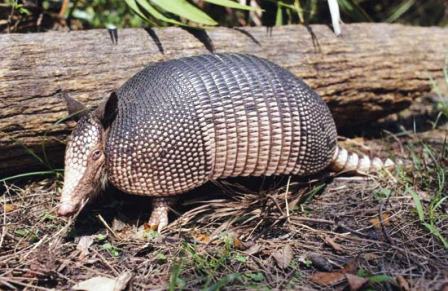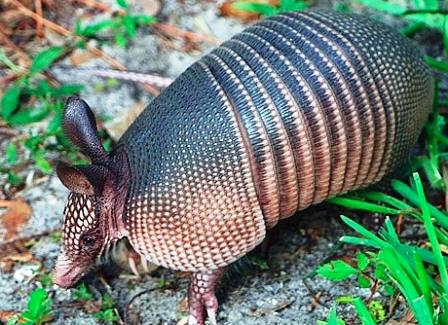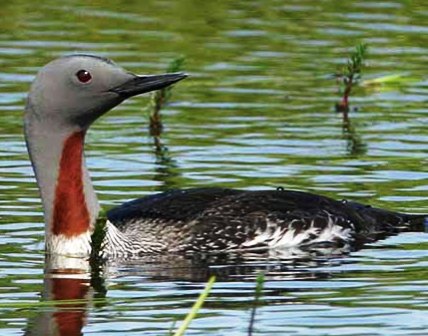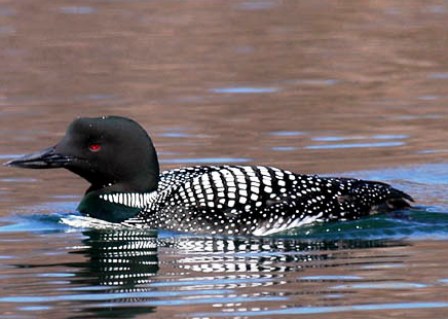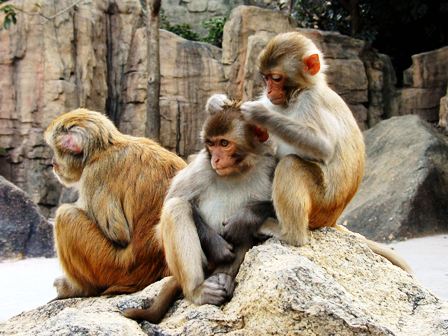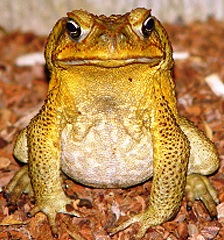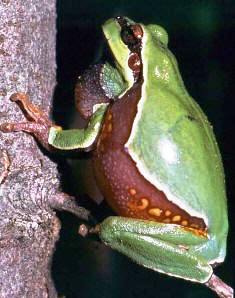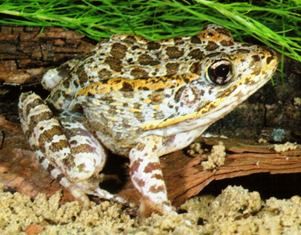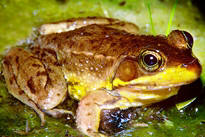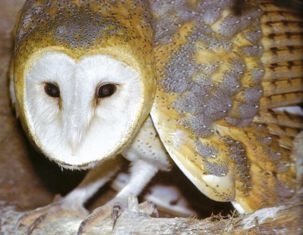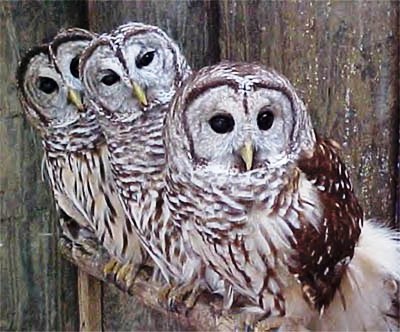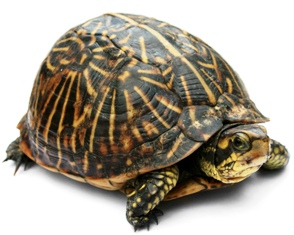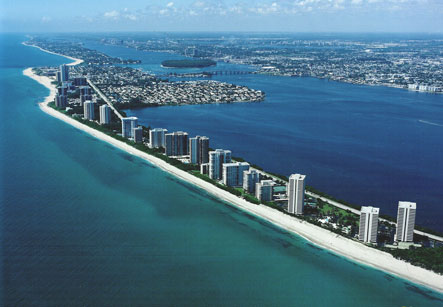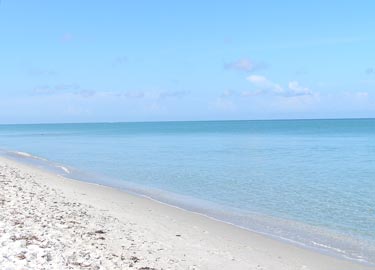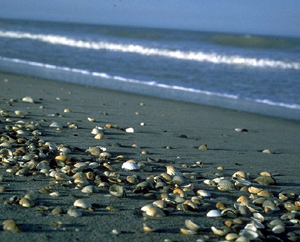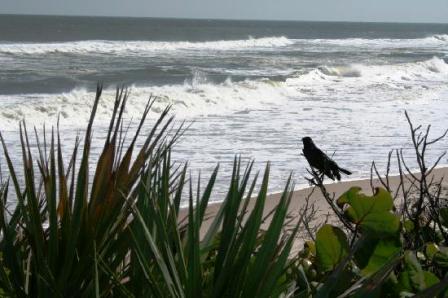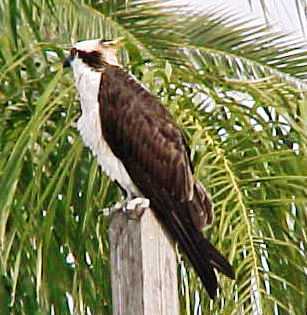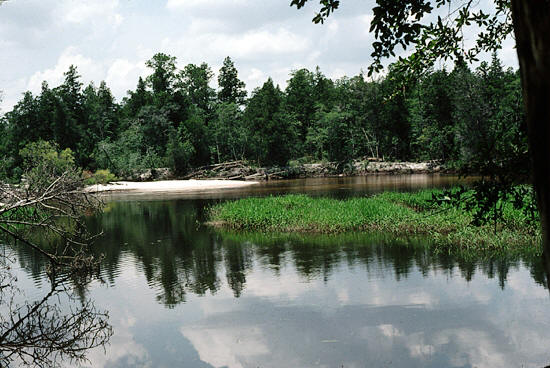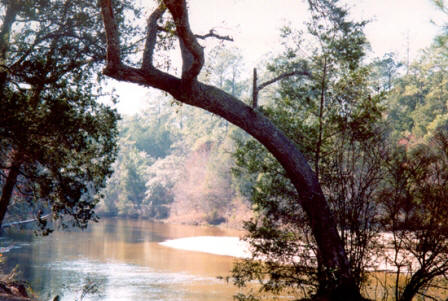Sunday, December 30, 2018
Purchase our book of Michael Arnold's artwork
If you ever wanted to purchase art pieces by Michael Arnold but couldn't afford it or didn't have enough space, try buying his book filled with his complete collection of artwork. It's on sale on Amazon! A great selection of artwork with descriptions by award winning Florida artist Michael Arnold.
https://www.amazon.com/dp/1731403828
Friday, August 24, 2018
Florida Armadillos
Armadillos
are small placental mammals, known for having a leathery armor shell.
The word armadillo is Spanish for "little armored one". In the
United States, the sole resident armadillo is the Nine-banded Armadillo,
which is most common in the central southernmost states. Armadillos have
been consistently expanding their range over the last century due to a
lack of natural predators.
Armadillos feed primarily on insects and their larvae. They also eat earthworms, scorpions, spiders, snails, and small vertebrates and their eggs. Reports of armadillo damage to birds' nests on the ground are rare. People cannot help but appreciate the fact that armadillos consume large amounts of armyworms, cockroaches, ants, wasps, flies, beetles, and grasshoppers. They have been known to dig up entire yellow-jacket nests. Armadillos usually search for food by rooting or digging in ground litter, but will occasionally eat berries and mushrooms.
Armadillos feed primarily on insects and their larvae. They also eat earthworms, scorpions, spiders, snails, and small vertebrates and their eggs. Reports of armadillo damage to birds' nests on the ground are rare. People cannot help but appreciate the fact that armadillos consume large amounts of armyworms, cockroaches, ants, wasps, flies, beetles, and grasshoppers. They have been known to dig up entire yellow-jacket nests. Armadillos usually search for food by rooting or digging in ground litter, but will occasionally eat berries and mushrooms.
Armadillos were not always present in Florida. During the past century,
they expanded their range from Texas into the Florida panhandle.
Armadillos are now found in uplands throughout Florida, except in the
Keys and parts of the Everglades and Big Cypress swamp.
Armadillos like forested or semi-open habitats with loose textured soil that allows them to dig easily. Armadillos tend to frequent the vicinity of streams and water holes, although they seem to avoid marshy areas. Tracks in the mud around small ponds give evidence that the armadillos visit them not only for purposes of drinking and feeding, but also to take mud baths.
Armadillos are fascinating mammals. When they need to cross narrow water bodies, they often walk on the bottom under water. If it is a wide body of water, they will inflate their stomach to twice its normal size, allowing for enough buoyancy to swim across. When startled, armadillos often leap high into the air, and then run quickly to a nearby burrow. Armadillos dig burrows for homes or to escape predators, and a single armadillo can have several different burrows with multiple entrances. For more information about Florida nature be sure to visit our website www.floridiannature.com
Armadillos like forested or semi-open habitats with loose textured soil that allows them to dig easily. Armadillos tend to frequent the vicinity of streams and water holes, although they seem to avoid marshy areas. Tracks in the mud around small ponds give evidence that the armadillos visit them not only for purposes of drinking and feeding, but also to take mud baths.
Armadillos are fascinating mammals. When they need to cross narrow water bodies, they often walk on the bottom under water. If it is a wide body of water, they will inflate their stomach to twice its normal size, allowing for enough buoyancy to swim across. When startled, armadillos often leap high into the air, and then run quickly to a nearby burrow. Armadillos dig burrows for homes or to escape predators, and a single armadillo can have several different burrows with multiple entrances. For more information about Florida nature be sure to visit our website www.floridiannature.com
Thursday, August 16, 2018
Florida Nature: Loons
The red-throated loon is the smallest, slightest of the
divers. It is distinctive among loons not only in size, but also in
behavior, vocalizations, locomotion, and other aspects of life history.
The Red-throated Loon, unlike other loons, does not need to patter on
the water's surface on a long takeoff, but rather can take flight
directly from land if necessary. Most loons must paddle furiously across
the surface of the water before becoming airborne, but the small
Red-throated can practically spring directly into the air from land, a
useful ability on its tundra breeding grounds. Whereas only males of
other loon species vocalize, both male and female
Common loons are heavy-bodied birds that sit low in the water just
offshore. They are known as the great northern diver by British birders
and for good reason. They dip their heads below the surface to visually
locate prey and then power through the water with large webbed feet.
Streamlined and efficient underwater swimmers, loons can quickly move in
on small fish, crabs and invertebrates, usually swallowing them while
still submerged. Most dives are shallow and last less than a minute, but
deep dives may last up to five minutes. Loons are adapted to life on the
water; their legs are located so far back on their bodies that they are
one of the few birds that cannot walk on land. Instead they must crawl
or push their bodies onto land or into their nests.
For more information on loons and other Florida birds be sure to visit our website http://www.floridiannature.com
Wednesday, August 8, 2018
Florida Nature: Rhesus Macaque Monkey
The Florida population of rhesus macaque gained a foothold niche in the
Silver River State Park Local legend has it that the monkeys
descended from animals used to film several Tarzan movies nearly 50
years ago at Silver Springs. The first monkeys were brought here at that
time, but by a former Jungle Cruise operator who figured that the
animals would add an exotic and amusing touch to the lush natural
setting. In addition, various colonies of rhesus and other monkey
species are speculated to be the result of zoos and wildlife parks
destroyed in hurricanes, most notably
Hurricane Andrew.
The rhesus macaque has a brown body with lighter brown under parts. The monkey's face and rump are red. The average height for females is 18.5 to 20.9 inches, and 19 to 25 inches for males. The average weight for females is approximately 9 to 24 pounds, while males weigh between 12 to 24 lbs. The head is round, the eyes oval, and the ears small. The front legs are longer than the hind legs.
A diurnal animal, the Rhesus Macaque is both arboreal and terrestrial; it is mostly herbivorous and feeds on leaves and pine needles, roots, and the occasional insect or small animal. The monkey has specialized pouch-like cheeks, allowing it to temporarily hoard its food. The gathered morsels are eaten sometime later, in safe surroundings.
Learn all about Florida nature at Floridiannature.com
The rhesus macaque has a brown body with lighter brown under parts. The monkey's face and rump are red. The average height for females is 18.5 to 20.9 inches, and 19 to 25 inches for males. The average weight for females is approximately 9 to 24 pounds, while males weigh between 12 to 24 lbs. The head is round, the eyes oval, and the ears small. The front legs are longer than the hind legs.
A diurnal animal, the Rhesus Macaque is both arboreal and terrestrial; it is mostly herbivorous and feeds on leaves and pine needles, roots, and the occasional insect or small animal. The monkey has specialized pouch-like cheeks, allowing it to temporarily hoard its food. The gathered morsels are eaten sometime later, in safe surroundings.
Learn all about Florida nature at Floridiannature.com
Friday, August 3, 2018
Ribbit Ribbit: Florida Frogs
When a heavy evening rain is impending during the spring or summer, many frogs and toads begin to call. This is the first signal of intense breeding activity. Frogs and toads generally mate at night, since the darkness conceals them from sharp-eyed predators, especially wading birds. As rain starts to fall more and more frog voices are heard, until in certain places it becomes almost deafening. Although it may seem like frogs are just singing for fun, it is actually the males who are calling to set up territories and to attract females. Most frogs in Florida breed and lay their eggs in shallow, temporarily flooded ponds, ditches, and depressions. Temporary water holes do not have large resident populations of predators, such as fish, salamanders, and water snakes, that would feed on the eggs or tadpoles because theses shallow pools usually dry up quickly.
The Pine barrens tree frog is only about 1–3 inches long and is one of the smaller species of tree frogs. Members of the species are predominantly green, with wide dark stripes. They often have spotted orange-gold markings on the hidden surfaces of their legs, and also tend to have large toe pads. Pine Barrens tree frogs are most commonly found in brushy areas, often near peat bogs or shallow ponds. They usually inhabit areas carpeted with thick moss. Adults are terrestrial, but tend to reside near water sources. Unlike most frogs, Pine barrens tree frog are tolerant of low pH levels, and often lay eggs in shallow, acidic ponds. Members of the species are currently distributed in three distinct populations: New Jersey Pine Barrens, the Sandhills of North and South Carolina, and the Florida Panhandle area.
Gopher Frog (Rana capito)- These nocturnal frogs are noted for their short, stubby appearance. Their backs are marked heavily with dark spots, sometimes causing a clouded pattern. Their dorsolateral ridges are very distinctive. This frog will reach a length of 4.33 in. The gopher frog usually spends daylight hours in burrows, holes, or tunnels that are created by other animals. The Gopher frog primarily inhabits the threatened sandhill communities, flat woods, and scrub in the Atlantic coastal plain, where it is usually found near ponds. The gopher frog breeds on spring nights in very wet conditions. They seem to be rare, but their secretive nature makes it difficult to determine their true population status.
Bog Frogs have rough dark green to brown backs, black mottled undersides, yellow throats, and may have light spots on the lower jaw. A light brown line runs along the lateral fold and does not reach the groin area. This frog is less than 2 inches long. This frog is uncommon in Florida and is found only in a few acidic streams in Walton, Santa Rosa, and Okaloosa counties in the panhandle. The Florida bog frog will call from spring to summer with a call which sounds like a chuckle -- a series of low-pitched single clucking calls, noticeably slower at the end of the call.
Learn more at www.Floridiannature.com
Thursday, July 26, 2018
Florida Owls
Owls are a common bird in Floridian nature. They come in a variety of sizes and help keep area rodents in check. Five species of owls call Florida home and include the screech owl, barn owl, barred owl, horned owl and burrowing owl.
The barn owl (Tyto alba) is found throughout the state of Florida and inhabits hardwood and tropical hammocks, urban areas with abundant palms and large hardwoods, and manmade structures such as silos, barns, and deserted buildings. Barn owls forage voraciously for rodents in open areas such as prairies, pastures, fields, and sparsely wooded areas. Barn owls in Florida breed from March through July and nest in secluded places like caves, barns, tree cavities, and large bird houses. They build no actual nest and lay from 3-11 (most commonly 5-7) white or buff-white eggs. Many people attract barn owls by erecting nest boxes in an effort to control local rodent populations
The Barred Owl is a medium-sized gray-brown Owl streaked with white horizontal barring on the chest and vertical barring on the belly. They are round-headed with a whitish/brown facial disk with dark brown trim. The eyes are brown, and the beak is yellow and almost covered by feathers. They have a long tail. There is no difference in plumage between males and the larger females. A very opportunistic hunter, a Barred Owl can sometimes be seen hunting before dark. This typically occurs during the nesting season or on dark and cloudy days. A Barred Owl will use a perch, from where it dives upon its prey - meadow voles are its main prey, followed by shrews and deer mice. Other mammals include rats, squirrels, young rabbits, bats, moles, opossums, mink, and weasels. Birds are taken occasionally, including woodpeckers, grouse, quail, jays, blackbirds, and pigeons. They also eats small fish, turtles, frogs, snakes, lizards, crayfish, scorpions, beetles, crickets, and grasshoppers. Birds are taken as they settle into nocturnal roosts, because they cannot catch birds on the wing. They will also swoop down to the water's edge to catch frogs, other amphibians, and occasionally fish. Barred Owls are attracted to campfires and lights where they forage for large insects. Prey is usually devoured on the spot.
For more information on Florida owls be sure to visit FloridianNature.com
The barn owl (Tyto alba) is found throughout the state of Florida and inhabits hardwood and tropical hammocks, urban areas with abundant palms and large hardwoods, and manmade structures such as silos, barns, and deserted buildings. Barn owls forage voraciously for rodents in open areas such as prairies, pastures, fields, and sparsely wooded areas. Barn owls in Florida breed from March through July and nest in secluded places like caves, barns, tree cavities, and large bird houses. They build no actual nest and lay from 3-11 (most commonly 5-7) white or buff-white eggs. Many people attract barn owls by erecting nest boxes in an effort to control local rodent populations
The Barred Owl is a medium-sized gray-brown Owl streaked with white horizontal barring on the chest and vertical barring on the belly. They are round-headed with a whitish/brown facial disk with dark brown trim. The eyes are brown, and the beak is yellow and almost covered by feathers. They have a long tail. There is no difference in plumage between males and the larger females. A very opportunistic hunter, a Barred Owl can sometimes be seen hunting before dark. This typically occurs during the nesting season or on dark and cloudy days. A Barred Owl will use a perch, from where it dives upon its prey - meadow voles are its main prey, followed by shrews and deer mice. Other mammals include rats, squirrels, young rabbits, bats, moles, opossums, mink, and weasels. Birds are taken occasionally, including woodpeckers, grouse, quail, jays, blackbirds, and pigeons. They also eats small fish, turtles, frogs, snakes, lizards, crayfish, scorpions, beetles, crickets, and grasshoppers. Birds are taken as they settle into nocturnal roosts, because they cannot catch birds on the wing. They will also swoop down to the water's edge to catch frogs, other amphibians, and occasionally fish. Barred Owls are attracted to campfires and lights where they forage for large insects. Prey is usually devoured on the spot.
For more information on Florida owls be sure to visit FloridianNature.com
Wednesday, July 18, 2018
Florida turtles
The loveable, slow-moving Gopher Tortoise is famous for digging underground burrows 10 to 35 feet long with "bedrooms" at the ends. The burrows are found in sandy well drained areas through out Florida. In good weather, the tortoise emerges from its burrow to browse on low-growing vegetation, including leaves, grass and wild fruits. Over seventy other kinds of animals have been found using the state protected Gopher Tortoise burrows in various ways. These include burrowing owls, raccoons, opossums, gopher frogs, spiders, insects, cotton rats, indigo snakes, and rattlesnakes.
The Florida Box Turtle is an attractive turtle that has been used a a children's pet. It spends most of its time wandering through woods, fields, and gardens, but it will occasionally soak itself in water. A small to medium sized turtle, the Florida Box Turtle is one of the well known subspecies of eastern box turtle. In both appearance and color it is unlike its northern cousin the Eastern Box Turtle. It can be quickly identified by the almost black background to its elongated shell with the back of the shell flaring out. Box turtles have a highly domed carapace (upper shell) and a hinged plastron (bottom shell) that can be completely shut to keep out predators. These characteristics contribute to this turtle's descriptive name, 'box turtle'. The Florida Box Turtle feeds on different types of invertebrates, insects and plant matter. This species of box turtle seems to be very carnivorous even as adults. Males are slightly larger on average than females, the posterior lobe of their plastron is concave, and the claws on their hind legs are short, thick, and curved. Males also have thicker and longer tails. Females' rear claws are longer, straighter, and more slender, and the posterior lobe of their plastron is flat or slightly convex. Males have red irises and females have yellowish-brown irises.
Thursday, July 12, 2018
Florida Coastline
Florida has a longer coastline facing the Gulf of Mexico than the Atlantic Ocean. With 580 miles along the Atlantic Ocean and 770 miles along the Gulf of Mexico the state of Florida has a total of 1,350 miles of coastline! Florida is a water wonderland with it's pristine rivers and lakes, the Gulf of Mexico, Atlantic Ocean coastline, and it's mixtures of brackish backwaters. As you may know, Florida has some of the best beaches in the world. No matter where you are in Florida, there is a beach just a short drive away.
The waters from Fort Myers through Pine Island Sound and Charlotte Harbor have to be one of the most diverse boating and fishing locations anywhere in the world. Pine Island Sound is bounded on the west by Sanibel, Captiva and North Captiva Islands. Hundreds of islands dot the Sound; redfish, snook, pompano and speckled trout delight the patient angler. To the east, Pine Island's mangrove shorelines, tidal creeks and oyster bars still resist the crush of development. Explore Matlacha, Pineland and Bokeelia for a taste of the real Florida, where Calusa Indians farmed and fished 1,000 years ago.
Monday, July 2, 2018
Florida Nature: Canaveral National Seashore
The Canaveral National Seashore and the Merritt Island Wildlife Refuge are
located midway on Florida’s east coast between Daytona Beach and
Melbourne. The history of Merritt Island extends from prehistoric times
to the space age! Inhabited by Indians since about 7000 B.C., the island
in recent years has rocketed to the site of Cape Canaveral, with which
the refuge and seashore share a border. The National Park Service
protects ten National Seashores in the United States. Canaveral National
Seashore is a step into the past, protection for the present, and a
doorway into the future. The 100
Timucuan Mounds that are
within it's boundaries are evidence of past generations of people that
lived here. Canaveral National Seashore covers 57,000 acres and the 24
mile stretch of undeveloped beach is the longest stretch on Florida's
east coast. Fourteen endangered species make their home within
Canaveral's boundaries. Kennedy Space Center owns the land that is
managed by the National Park Service and Merritt Island National
Wildlife Refuge. Joint efforts of three agencies protect it from
development and preserve the history, the wildlife and the diverse
habitats.
The
Wildlife refuge can be explored by car along two nature drives or by
foot via two short hiking trails. Either way the range of wildlife is
stunning. Many of the 250 bird species that have been observed here make
their nests on the refuge, including
great blue herons, snowy egrets,
turkey vultures, pi-billed grebes and the
rare black skimmers.
The refuge is also home to nineteen endangered species, most notably the southern bald eagle and the brown pelican. Porpoises, manatees, and whales are occasionally glimpsed offshore. Canaveral National Seashore serves as an important nesting area for sea turtles.
The refuge is also home to nineteen endangered species, most notably the southern bald eagle and the brown pelican. Porpoises, manatees, and whales are occasionally glimpsed offshore. Canaveral National Seashore serves as an important nesting area for sea turtles.
Tuesday, June 26, 2018
Florida Osprey
Ospreys, also known as “fish hawks,” are expert anglers that like to hover above the water, locate their prey and then swoop down for the capture with talons extended. The undersides of the toes on each foot are covered with short spines, which help them grasp slippery fish. In Florida, ospreys commonly capture saltwater catfish, mullet, spotted trout, shad, crappie and sunfish from coastal habitats and freshwater lakes and rivers for their diet.
Read more at http://www.floridiannature.com/eagleandospreyraptors.htm
Wednesday, June 20, 2018
Blackwater River State Park
Blackwater River State Park is considered one of the purest sand-bottom rivers in the world, the Blackwater River is in its natural state for almost its entire length. Beginning 45 miles upstream in Alabama, it continues downstream for 13 miles before emptying into Blackwater Bay. The river's sand bottom, dark tannin waters and contrasting large, white sandbars have drawn worldwide attention and provide the perfect setting for this 590- acre park. The river attracts paddlers from far and wide and has been designated a Florida canoe trail. The last two miles of the trail are located within the park. Besides being a favorite destination for canoeists and kayakers, Blackwater River offers opportunities for a variety of outdoor recreation. The river is one of the purest sand-bottom rivers in the nation, making this park a popular place for swimming, fishing, camping, and paddling. Shaded campsites are just a short walk from the river, and visitors can enjoy a picnic at a pavilion overlooking the river.
Upland pine forests dotted with persimmon, turkey oak, sweetgum, flowering dogwood and other shrubs are found in the park. Open canopy forests combine different types of pine and dense groundcover such as gallberry, saw palmetto, wiregrass, wild blueberry and wax myrtle. Along the river and large streams in the floodplain area, the forest is dominated by various species of oaks and hickory, red maple, sycamore, magnolia, holly, tupelo and azaleas. The water level in the floodplain and swamp lakes fluctuates and may even become completely dry. Plants vary according to the water supply. Look for water fern, water lily, coontail, bladderwort, spatterdock and other emergent plants. White-tailed deer, bobcats and turkeys are quite common. River otter may be seen occasionally and the graceful Mississippi kite is often observed soaring overhead in the summer.
The park has such amenities as birding, boating, canoeing, fishing, hiking, kayaking, picnicking areas, swimming, tubing, wildlife viewing and full camping facilities. The main picnicking area has covered picnicking pavilions, restrooms, and a spacious parking lot. Bring your tubes and enjoy a leisurely float down the river to the Deaton Bridge. It is a short 1 mile hike back to the parking lot to retrieve your vehicle. Very kid friendly park with a variety of areas for swimming.
Blackwater River State Park was established in 1967. The park opened to the public on November 22, 1968 and consisted of 360 acres. On July 17, 1981, the park acquired 230 acres from the Division of Forestry. Today, the park contains 590 acres of upland pine forests, swamps, and scrubby ridges and is surrounded by the Blackwater River State Forest. Atlantic white cedars line the river and the 1982 Florida Champion, recognized as the largest of its species, is found within the park. The park was also certified as an official Registered State Natural Feature in 1980 for possessing “exceptional value in illustrating the natural history of Florida”.
Monday, May 28, 2018
Florida Nature: Natural Bridge Battlefield
Natural Bridge is the site of the second largest Civil War battle in Florida and where the St. Marks River drops into a sinkhole and flows underground for one-quarter of a mile before reemerging.
This site illustrates the crucial role the lay of the land can play in military strategy. In early March of 1865, Union General John Newton and naval Commander William Gibson mounted a two pronged advance toward Tallahassee. Newton landed his troops and headed north, but Gibson's gunboats ran aground in the St. Marks river. When word reached Tallahassee, the limited Confederate forces were quickly reinforced with volunteers. Some volunteers were recuperating veterans, while others were men as old as seventy and boys as young as fourteen.
When General Newton encountered stiff resistance at Newport Bridge, he opted for a surprise attack across a nearby natural bridge. This move had been anticipated by Confederate General William Miller, who entrenched his forces there. The Confederate repelled three Union attacks in twelve hours. Union losses totaled 21 killed, 89 wounded, and 38 captured. Confederate losses totaled 3 killed and 22 wounded.
Deciding the battle was lost, Newton retreated. Southern pride still warms to this victory for it left Tallahassee the only confederate capital east of the Mississippi never to be occupied by Union armies.
Subscribe to:
Posts (Atom)

